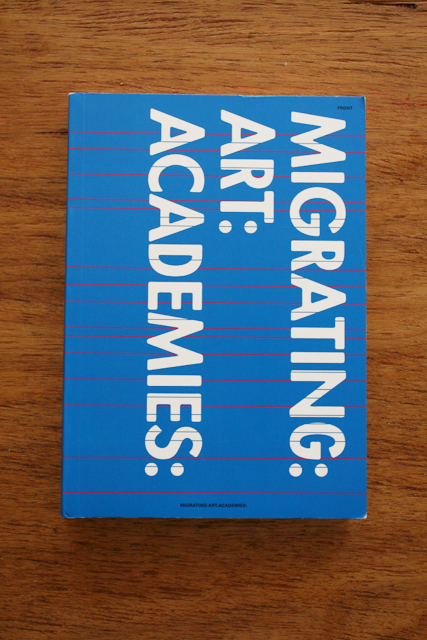Mindaugas Gapševičius (ed)
ISBN: 978-9955-854-91-3
This MigAA volume, titled Migrating:Art:Academies: invites the reader to construct their own opinion on the efficacy of the project as a field for learning and creative action. The book provides a link between the virtual school and the mobile school; it also functions as an anchor point for future research projects, and as an aesthetic package for the available documentary material. The projects introduced in the book — whether a drawing, a map, photographs, or a text — were delivered by the authors themselves, edited and assembled together with an eye on readability from multiple perspectives. The book is divided into three sections: Migrating: Art: and Academies:. Following these is a compendium of contributor’s biographies and finally, included with the book is a postcard containing a keyword index, the use of which is described below.
In the Migrating: section the reader will get an idea how the actual project participants worked and created while on the road and what their relation was to the general MigAA theme of migration. Personal interpretations, ideas, sketches, notions, and notes form a fertile first-draft of an ongoing process of artistic expression. Some of those impressions are included in this section along with photos, maps, and interviews.
Art: section documents numerous art works — both conceptual and actual — along with related actions realized by MigAA participants during the laboratory deployments. The syntactically divergent projects vary from drawings to performances and installations to computer software packages and are here grouped by thematic or formal aspect.
Academies: section contains more in-depth papers, articles, essays, and research documentations that were presented at some point during the project, or will be presented in the final conference in Berlin. Texts range from historical research, analysis of migration,to artistic and academic research presentations.
Around sixty keywords, key phrases, and key images were compiled and subsequently linked graphically across all three sections. An index deployed on the accompanying postcard offers a simple navigational beacon to follow throughout the book. The editors suggest following the red lines for objective keys and the blue lines for subjective keys. The awareness of subjective and objective functions of such indexing gives reason for further debate on what this specific book is about or what a printed book is about in general, as it is a mobile (and thus migrating) interface for ideas.
